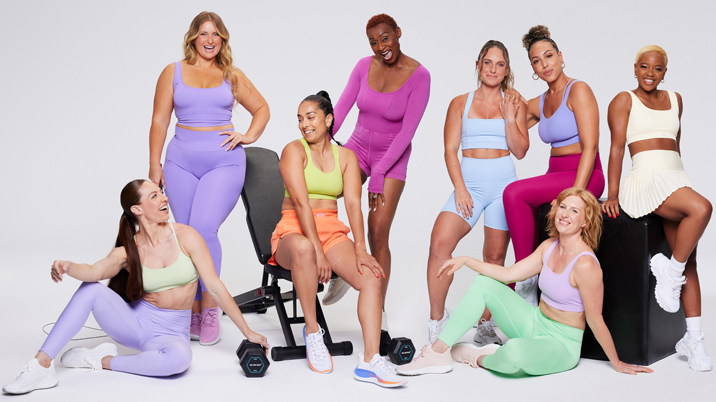
A few months ago, Hearst UK’s women’s health and wellness title enhanced the Women’s Health Collective, a membership strategy supported by a new app, offering training and nutrition plans and advice from experts alongside content from the magazine. At the same time, its sibling brand launched a new version of the Men’s Health Squad. It’s all in the name: a Collective for women, and a Squad for men.
David Robinson, chief customer officer for Hearst UK explains: “We talked a lot about naming, and I think it’s an important thing to get right. Collective is about, we are on your side, we want to be with you as part of that journey. Squad should feel like you are part of a group that is backing you at every stage of your fitness and health journey.”

Since launching its membership strategies, the team at Hearst UK, including Robinson and Claire Sanderson, editor-in-chief of both health titles, have been trying to better understand customer values to provide richer content they can charge a premium price for. They have talked both to the existing customer base and across the wider footprint of the brands, using online focus groups to find out what they want to see more of and how and where people want to consume content.
“Ultimately, you can super serve a small audience but training plans that leverage some of the journalists, some of the talent, we know that’s got stretch,” says Robinson.
A three-pronged approach
To appeal to as wide an audience as possible, they are offering three different subscription tiers. These begin with digital-only content, which Robinson sees as “an entry level paid relationship with Men’s Health or Women’s Health”. Then there is a print and digital bundle; and finally, membership via the app, allowing readers to access richer content and form a deeper relationship with the brand.
“The app allows you to unlock some of those training plans, longer reads and a bit more expertise and intimacy from the editors,” says Robinson.
Members of both the Collective and Squad can access advice from a wide range of experts. In the Women’s Health Collective, these include athlete and sports scientist Amanda Ngonyama, Yogahood founder Sanchia Legister, and pre and post-natal specialist Rosie Stockley. Meanwhile, the Men’s Health Squad, billed as a handheld concierge service, boasts Gladiator Zack George, Farm Fitness founder Tom Kemp and Nike master trainer Faisal Abdalla among others.
There are a wide variety of training plans for every goal, recipes and meal planners, live Q&As and a members-only newsletter. This is on top of both the print and digital editions of the magazines and unlimited access to the brands’ websites. Here they will find the latest science backed health news, as well as long reads, opinion pieces, behind-the-scenes content, and podcasts. Prices vary depending on offers at the time of joining, but the fee for 12 months is around £89.99.
When it comes to targeting new readers, Robinson believes this has more to do with mindset than age brackets or demographics. He points to the January cover star of Men’s Health UK, world boxing promoter Eddie Hearn, who at 44, has transformed himself from being overweight and unfit to being in the best shape of his life.
“He’s a good example of someone that’s in their forties, wants to stay in shape, wants to know the kind of food they need to eat and wants good training recommendations. For me, it’s less about, do we want to target 25 to 44-year-olds or 45-plus ABC1 men, it’s more about what’s the mindset of those customers? It’s quite different for Women’s Health, because their readers are already engaged in a healthy lifestyle and are looking to improve health and wellbeing.”
At 47, Robinson sees himself as a prospective Men’s Health customer; someone who is relatively out of shape and needs experts to guide him towards better eating and decision making around fitness. He believes Women’s Health readers are more likely to already be on that path and just in need of guidance to further their plans.
Health and wellness brands are subject to seasonal trends. In the lead up to the New Year, subscription sales of Runner’s World, another Hearst UK title, took off, whereas Men’s Health and Women’s Health didn’t see a similar boost until the festive period had come to an end.
“I think it’s because it’s the whole package of lifestyle and what you eat in terms of the healthier journey. Most people only really start thinking about what they should be eating once Christmas has passed, versus you might still want to go for a run and you’re less worried about the nutritional part,” says Robinson.
Tracking engagement
Hearst UK has responded to these shifts by going out with “rich offers” early in the year, increasing the pool of the audience they can talk to. Once these customers have signed up, the onboarding process is crucial. It is up to Robinson and his team to make sure the communications they receive are timely and then respond to the cues, whether it is opening emails, clicking on links, or engaging in content at a high level. This might lead them to tweak the content or further develop the proposition.
“Everything we do comes back to customer touch points within the products, but also in the comms they receive from Claire and her team which are facilitated by the customer teams in the business,” he says.
While systems are automated in terms of tracking how customers respond, Robinson is clear that the content itself be very much editorially led. Data is a useful tool, but not a substitute for good journalism.
“The dashboards provide us with cues to respond and further the proposition. As a customer or subscription and membership team, I think it’s important then that the customers go into specific cohorts. If you’re not seeing a level of engagement from the first time a customer downloads the app and begins to use it, then it might be they can be triggered with further comms.”
For example, a lot of people start the year wanting to go on a journey of better diet and lifestyle and follow-up communications and prompts can help them to stay on that path.
As well as keeping new customers on board, it is important to offer existing customers more in-depth content. Both Men’s Health UK and Women’s Health UK are brands with a high level of trust and expertise, and Robinson believes that is why people come to them.
“We always start with what the customer wants. Is there richer content the customer might want and therefore facilitate a more premium relationship with us? The beauty of both Men’s Health UK and Women’s Health UK is the level of trust and expertise that is inherent in the brand. I’ve worked with brands that haven’t necessarily had that. People come to us because we’re trusted experts.”
Importance of trust
Health and wellness is a crowded digital market with lots of online players vying for a share, and many apps offering training plans or weight loss programmes. Instead of worrying too much about the competition, Robinson believes the strength of Hearst’s titles is in the breadth and trustworthiness of their offering. Their role is to be the best editorially, which is why he believes talent like Eddie Hearn want to work with them. Some of the apps with a narrower focus could even be potential partners instead of rivals.
“Are we a tech business? Not really. We’re a brilliant journalistically led content business that should use that credibility to win in that area rather than say we want to develop something that others have gone into that can only do one thing.”
Robinson himself started out as a journalist in Sydney working for a travel magazine in 1998. When he returned to the UK, he spent the next decade working in magazines, including as publisher on the Radio Times. He stayed at BBC Worldwide for several years, before moving to News UK where he became director of customer attention across the Times brands, then marketing director, and managing director of The Sun.
“I’ve always worked with strong customer led content brands. My journey with Hearst is relatively new, but my background has always been in the subscription and marketing space,” he explains.

There are now plans afoot to roll out the membership model more widely at Hearst UK. In the second half of 2023, they also had the launch of Elle Collective. Wherever there are brands within the portfolio with audiences that want a deeper and more meaningful relationship, they want to develop this.
“I think you’ll see across 2024 that more membership propositions will come down the path,” says Robinson.
As well as the apps, events are a key area, both online and in-person. Digital events allow far more people to attend from around the UK, but there is also still a place for in-person events which might be Claire Sanderson in conversation with some of the talent featured in the magazine. These could take place at locations around the country, or at the Hearst UK headquarters in London.
“The beauty of online events is you can access them from your home and if you’re in Aberdeen or London, it doesn’t really make a difference,” says Robinson.
Given his job title, it is little surprise that he believes the key to success comes back to that word ‘customer’. “You have to continue to learn from customers and continue to adapt your approach in learning without ever diminishing the value of the good intuition of brilliant journalists,” he concludes.

This article was first published in InPublishing magazine. If you would like to be added to the free mailing list to receive the magazine, please register here.












